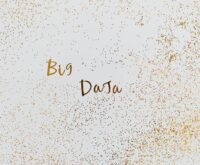The Silent Crisis: A Language Dies Every Two Weeks
Did you know that, by some estimates, a language disappears from the face of the earth every 14 days? It’s a staggering thought. Each time one vanishes, it takes with it an entire universe of stories, wisdom, and a unique way of seeing the world. This isn’t just about losing words; it’s about losing pieces of our collective human heritage. For generations, this has been a quiet, relentless erosion of culture. But now, in an ironic twist, the same forces of globalization that once accelerated this decline are providing the tools to fight back. We’re at a pivotal moment where technology is being harnessed to preserve endangered languages, creating a digital lifeline for cultures on the brink.
Key Takeaways
- Digital Archiving: Technology allows us to create permanent, accessible digital records of languages, including audio, video, and written texts, safeguarding them for future generations.
- Mobile Accessibility: Language learning apps and gamified experiences are making it easier and more engaging for younger, tech-savvy generations to learn their ancestral tongues.
- AI’s Role: Artificial intelligence and machine learning are revolutionizing language documentation by helping to transcribe, translate, and even predict grammatical structures for under-documented languages.
- Global Connection: Social media and online forums are connecting scattered speakers of endangered languages, creating virtual communities where the language can be used and practiced daily.
The Digital Ark: How Technology Saves Languages from Extinction
Imagine trying to save a species with just a few photographs. That’s what language preservation used to be like—relying on dusty books and the fallible memories of a dwindling number of elderly speakers. It was a noble effort, but it was a losing battle against time. Today, the toolkit is infinitely more powerful. We’re building a digital ark, a vast repository of linguistic data that can weather any storm. This isn’t just about storage; it’s about active revival.

Digital Archiving: More Than Just a Recording
The most fundamental use of technology in this fight is documentation and archiving. But we’ve moved far beyond simple audio recorders. Linguists and community members now use high-fidelity audio and video equipment to capture not just words, but the full context of communication—the gestures, the facial expressions, the cultural setting. These recordings are then digitized and stored in secure online archives like the Endangered Languages Archive (ELAR) or the Archive of the Indigenous Languages of Latin America (AILLA).
What makes this revolutionary? Accessibility. A young person in a remote village can now access stories told by their great-grandparents with a few clicks. A linguist on another continent can help analyze grammatical structures. These archives aren’t digital mausoleums; they are living libraries, accessible to the very communities they are meant to serve. They ensure that even if the last speaker falls silent, the language itself will not be lost to history. It will be there, waiting for the next generation to pick up the torch.
Mobile Apps & Gamification: Making Heritage Cool
Let’s be honest. For a language to survive, it needs young speakers. And how do you get young people interested? You meet them where they are: on their phones. The rise of mobile apps has been a game-changer for language revitalization. Instead of dry grammar books, learners can use gamified apps with points, leaderboards, and interactive challenges. Think Duolingo, but for languages spoken by only a few thousand people.
Projects like FirstVoices develop keyboards and apps for hundreds of Indigenous languages, allowing speakers to text and post on social media in their native tongue. When a teenager can text their friends in Ktunaxa or Plains Cree, the language suddenly feels relevant. It’s no longer just ‘the language of the elders’; it’s a living, breathing part of their modern identity. This integration into daily digital life is absolutely crucial for survival.

AI and Machine Learning: The New Scribes
This is where things get really futuristic. Documenting a language is incredibly labor-intensive. Transcribing and translating thousands of hours of audio can take a lifetime. Enter Artificial Intelligence. Researchers are now training AI models on limited data sets of endangered languages to help with this Herculean task.
Here’s how it works:
- Automated Transcription: AI tools can listen to audio recordings of a native speaker and generate a written transcript, saving linguists countless hours of manual work.
- Predictive Text Models: Similar to the autocorrect on your phone, AI can help create predictive text keyboards for indigenous languages, making it faster and easier for people to type.
- Data Analysis: Machine learning algorithms can analyze a collection of texts and help identify grammatical patterns and rules, essentially helping to reverse-engineer the language’s structure. This is vital for languages that have never been formally written down.
AI isn’t replacing human linguists or native speakers. It’s empowering them. It’s a powerful assistant that handles the grunt work, freeing up human experts to focus on the nuances, cultural context, and teaching that only they can provide.
Social Media and Online Communities: Connecting the Diaspora
Many endangered language communities have been scattered by economic and social pressures. A few speakers might live in their ancestral village, while others are in distant cities or even different countries. How do they practice their language? Social media has become an unexpected lifeline.
Facebook groups, WhatsApp chats, and YouTube channels dedicated to a specific language create virtual immersion environments. Speakers can share jokes, post family news, and discuss current events—all in their mother tongue. These online spaces foster a sense of community and create a low-pressure environment for learners to practice. It proves that a language doesn’t need a single geographical location to thrive; it just needs a dedicated community, and now, that community can be global.
“Every language is an old-growth forest of the mind, a watershed of thought, an ecosystem of spiritual possibilities.” – Wade Davis
Challenges on the Digital Frontier
Of course, technology is not a magic bullet. The path to revitalization is fraught with challenges. One of the biggest is the digital divide. Many indigenous communities that are epicenters of linguistic diversity lack reliable internet access or the devices needed to participate in these digital initiatives. It’s a cruel irony: the tools exist, but they can be out of reach for those who need them most.
There are also deep ethical considerations. Who owns the data? When a language is recorded and placed in a digital archive, who controls it? It is paramount that these projects are community-led. The technology must serve the speakers, not the other way around. Indigenous data sovereignty—the right of a community to control its own data—is a critical principle that must guide every project to preserve endangered languages. The goal isn’t just to collect data; it’s to empower the community to become the stewards of their own digital linguistic heritage.

Conclusion: A Future of Many Voices
The fight to save the world’s linguistic diversity is one of the most important cultural challenges of our time. For too long, the tide has been going out, carrying languages away into silence. But technology has given us the tools to build a dam—or better yet, to redirect the current.
Through digital archives, engaging mobile apps, intelligent AI assistants, and connected global communities, we are seeing real, tangible hope. The work is difficult, and it requires a deep partnership between technologists, linguists, and, most importantly, the language communities themselves. But the outcome is worth it. By preserving a language, we preserve a unique piece of the human puzzle. We ensure that the world of our grandchildren will be filled with a rich symphony of many different voices, not just a monotonous echo of a few dominant tongues.
FAQ: Frequently Asked Questions
Why can’t we just use a universal translator?
While tools like Google Translate are amazing, they are a poor substitute for a living language. A language is more than just a set of words; it’s a cultural framework. It contains unique concepts, humor, and history that are often ‘lost in translation’. The goal isn’t just to understand what’s being said, but to preserve the entire cultural ecosystem that the language supports.
How can I help support language preservation efforts?
There are many ways to contribute! You can support organizations like Wikitongues or The Endangered Language Fund. If you have heritage from a linguistic minority, seek out resources and try to learn a few words or phrases. Spreading awareness by sharing articles like this one also helps build momentum for the cause. Every little bit of support helps amplify these vital voices.
Isn’t language extinction just a natural process?
While languages have always evolved and sometimes disappeared, the current rate of extinction is unprecedented and largely driven by external pressures like globalization, political marginalization, and economic displacement. It’s less a ‘natural’ process and more a symptom of cultural imbalance. Using technology to intervene is about providing a counterbalance and giving these communities a fighting chance to keep their heritage alive.



 Wearable Medical Devices: The Future of Healthcare
Wearable Medical Devices: The Future of Healthcare  What is Ambient Computing? The Invisible Computer Guide
What is Ambient Computing? The Invisible Computer Guide  Future of Virtual Influencers: What’s Next for CGI Stars
Future of Virtual Influencers: What’s Next for CGI Stars  AI in Justice: The Ethical Dilemmas We Can’t Ignore
AI in Justice: The Ethical Dilemmas We Can’t Ignore  Wireless Charging Technology: How It Works & What’s Next
Wireless Charging Technology: How It Works & What’s Next  AI in Drug Discovery: The Future of Medicine
AI in Drug Discovery: The Future of Medicine  Sentiment Analysis for Crypto: A Trader’s Ultimate Guide
Sentiment Analysis for Crypto: A Trader’s Ultimate Guide  NFTs: The New Key to Membership & Brand Loyalty | Guide
NFTs: The New Key to Membership & Brand Loyalty | Guide  Polkadot’s Parachain Architecture Explained Simply
Polkadot’s Parachain Architecture Explained Simply  Crypto Phishing: How to Protect Your Digital Assets
Crypto Phishing: How to Protect Your Digital Assets  Social Media on Blockchain: The Next Digital Frontier
Social Media on Blockchain: The Next Digital Frontier  What is a Flash Loan? A DeFi Deep Dive for Beginners
What is a Flash Loan? A DeFi Deep Dive for Beginners